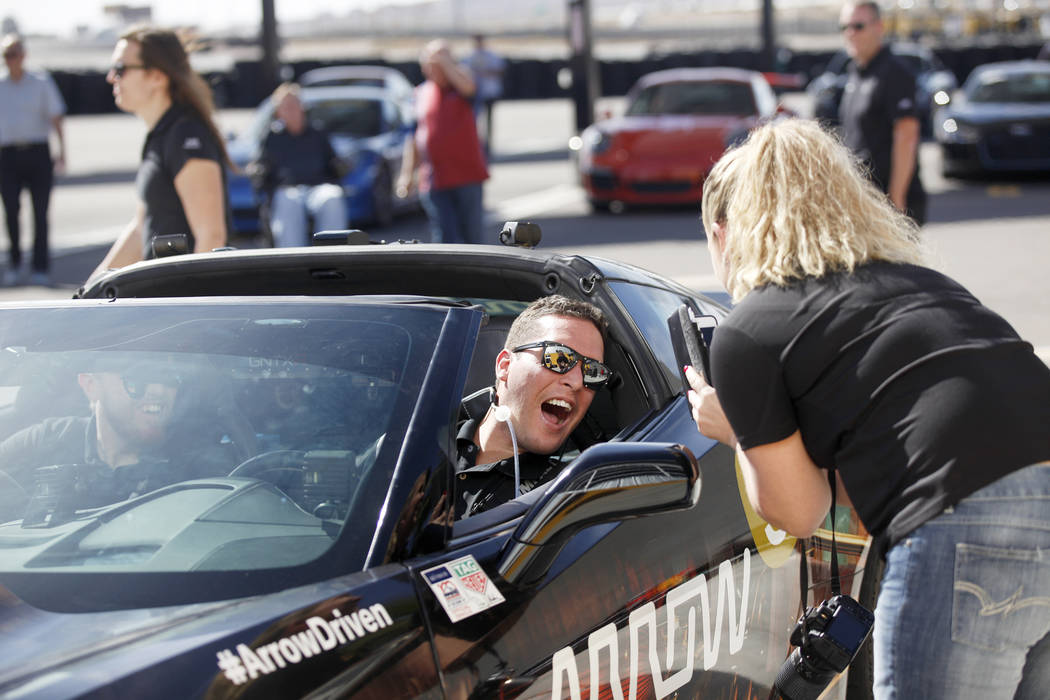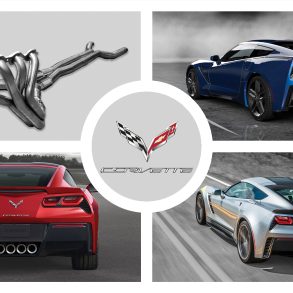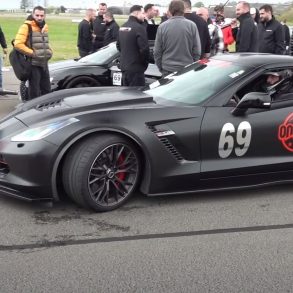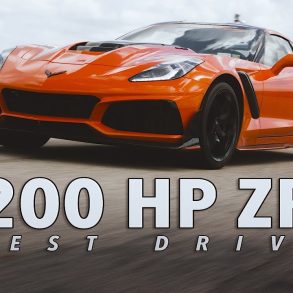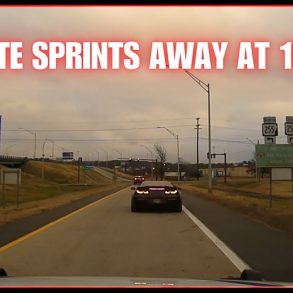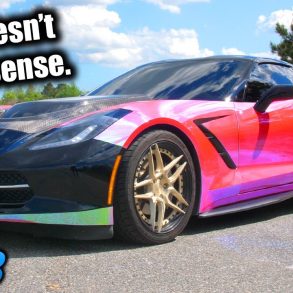A Custom Corvette Allows People with Physical Disabilities the Opportunity to Drive for the First Time!
On October 28, 2018, Kimber Laux, a writer for the Las Vegas Review-Journal, published an article about a company that had developed a technology that enabled people with disabilities to pilot a Corvette at the Las Vegas Speedway. While this article has less to do with the Corvette itself, we felt that this story exemplifies what the Corvette culture and community are all about. The following story is our re-accounting of Kimber Laux’s original story. You can also click here to read the original article.
Corey Capece, a 30-year old with spastic quadriplegic cerebral palsy, has never known what it’s like to drive a car. That changed on Sunday afternoon when he was able to sit behind the wheel of a car for the very first time….and what a first it was! You see, Corey’s first driving experience took place behind the wheel of a specially-modified C7 Chevy Corvette Stingray.
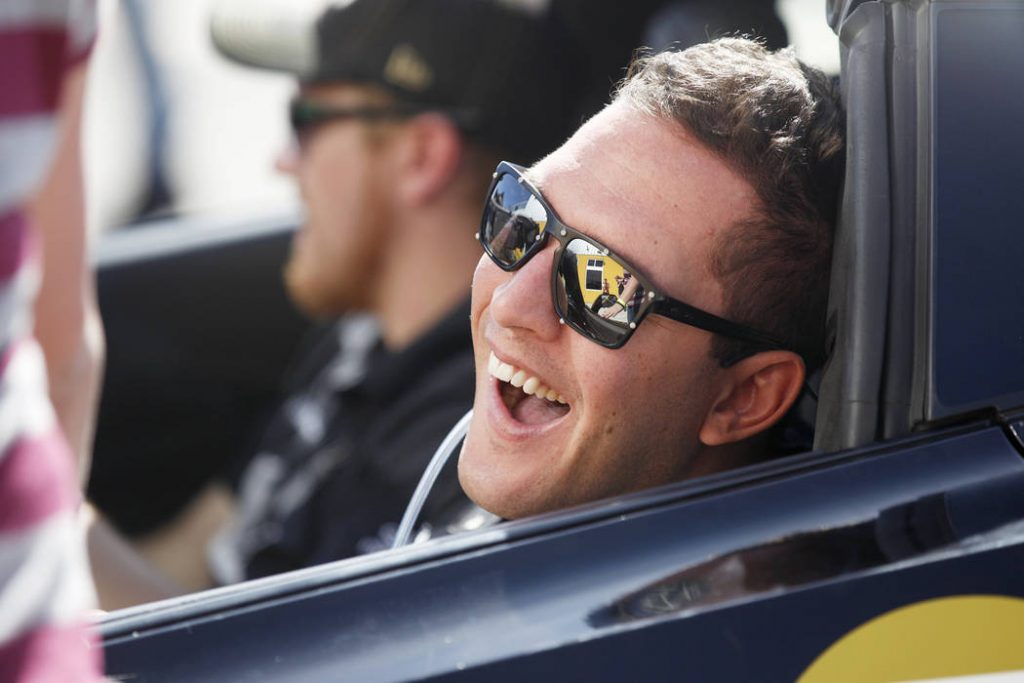
Capece was able to light up the rear tires, perform a number of burnouts, donuts and other high-speed maneuvers, while his parents, elated, recorded everything with their phones. By the time he was finished, white smoke and the smell of burning rubber hung in the air.
The technology that made this driving experience possible was developed by Arrow Electronics, a technology company from Centennial, Colorado. Their car, which they nicknamed “SAM” (for Semi-Autonomous Motorcar), is an upgraded Corvette that utilizes driver’s head movements to steer while sensing air pressure from the driver’s mouth to both accelerate and stop the car. The car, which is also designed to ignore the spasms and involuntary sneezing commonly associated with illnesses like Capece’s, makes driving a possibility -even when behind the wheel of a high-performance machine like the C7 Corvette – for people with disabilities.
While driving the Corvette may have been one of the highlights of the day’s activities, it was what happened after the smoke cleared which may have had the biggest impact on Capece. As Capece brought the car back to the pits and was assisted from the vehicle, he was introduced to his hero, Sam Schmidt. Mr. Schmidt is a former Indy Racing Leauge driver who was paralyzed after being involved in a crash in 2000.
“He’s my inspiration for getting up every day and trying new things and doing my best,” Capece said.
Capece and his parents traveled to Las Vegas from Southern California to celebrate the upcoming opening of “Driven”, Schmidt’s new nonprofit rehabilitation center in downtown Las Vegas. The grand opening for Driven is scheduled for Dec. 1, 2018.
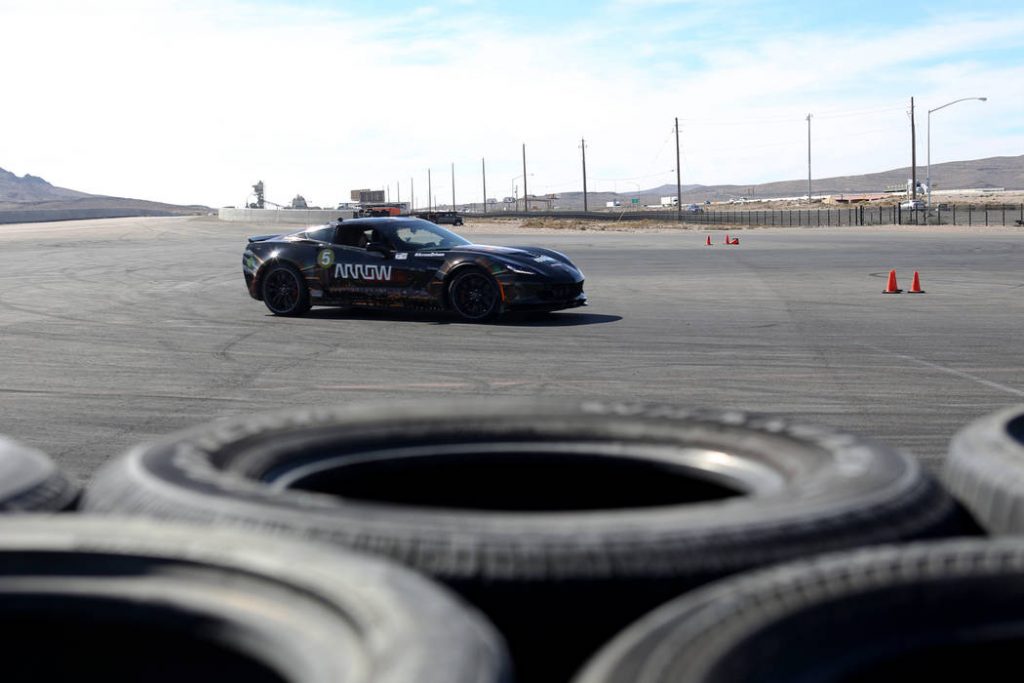
Corey’s father, Frank Capece, 60, said that despite being unable to move his arms or legs, his son is very active. Capece has already surfed in the Pacific Ocean twice this year, and he attends a rehabilitation camp every summer, which allows him to ride jet skis and play sports. When they learned about the special Corvette developed by Arrow Electronics for Schmidt’s “Driven” program, it was no surprise to Frank that his son wanted to drive the SAM car.
“He just eats this up. He likes the adventure,” Frank Capece said. “He does more than most able-bodied people I know.”
Schmidt hopes that his rehabilitation center reminds people with disabilities that there is life after injury or disease. He also hopes the technology in SAM can be used in tractor-trailer rigs, forklifts and harvesters.
“We want to give them that hope and inspire them to do more,” he said.
He would especially like to see the technology — and his new rehabilitation and resource center — benefit disabled veterans.
“They sign up to protect their country and feed their families, and they come back with a disability and don’t have a lot of direction,” Schmidt said. “Hopefully we can provide that direction.”


